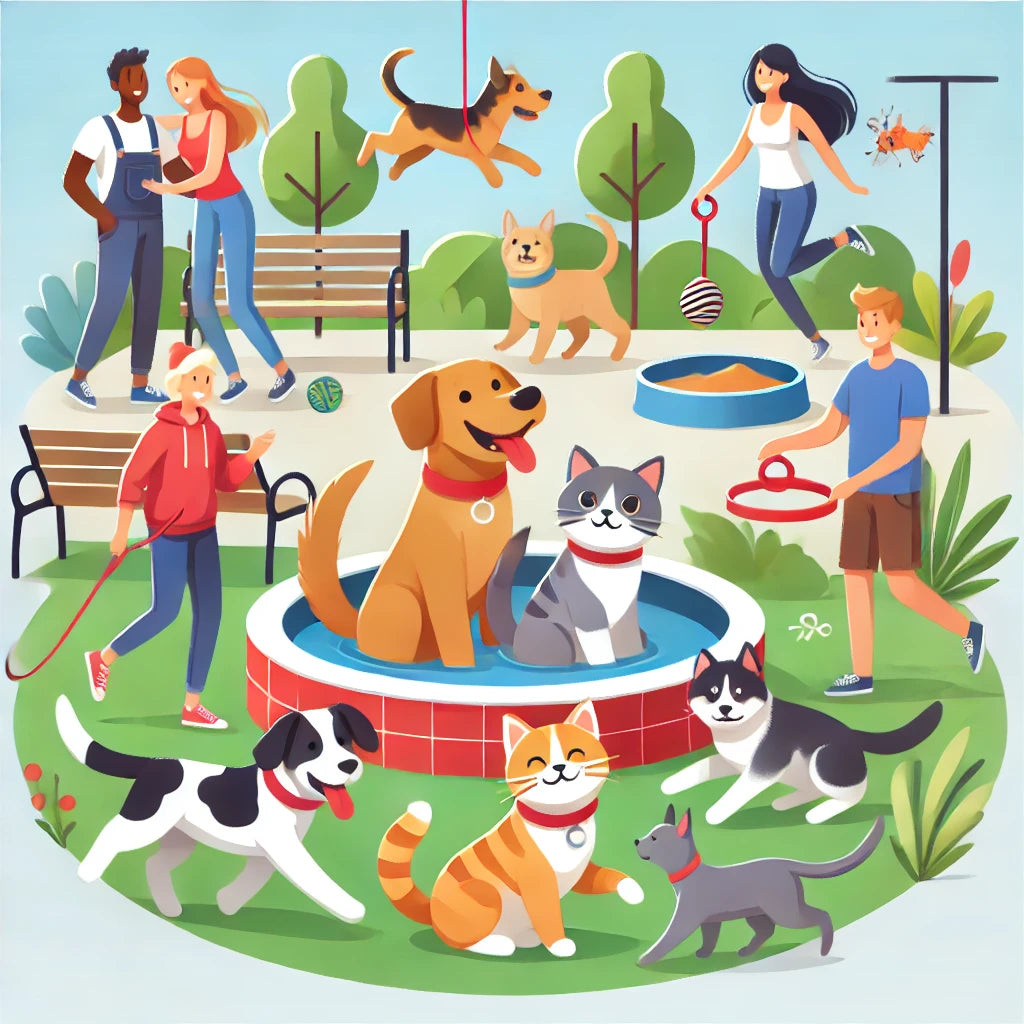How to Socialize Your Pet

Socializing your pet is essential for ensuring they are well-adjusted, happy, and safe in various environments and situations. Proper socialization helps reduce anxiety, prevent behavior problems, and ensure your pet interacts safely with other animals and people. Here’s a comprehensive guide to help you through the process.
Starting Early
The journey to a well-socialized pet begins during their early weeks. For puppies, this critical period is between 3-14 weeks, and for kittens, it’s between 2-7 weeks. During this time, their experiences significantly shape their future behavior. Introducing your pet to a variety of positive experiences during this stage is crucial. By starting early, you help build a foundation of confidence that reduces the likelihood of fear-related issues later in life.
Exposure to Different Environments
Once you’ve started socializing your young pet, the next step is to introduce them to various environments. Begin with familiar, low-stress settings before gradually introducing more complex environments like parks, urban areas, and nature trails. These experiences should always be positive, using treats and praise to reinforce good behavior. By exposing your pet to different surroundings, you help them feel comfortable and confident, thereby reducing anxiety and promoting adaptability.
Meeting Other Animals
As your pet becomes accustomed to different environments, it's essential to include interactions with other animals. Arrange supervised playdates with other pets to provide opportunities for positive interactions. Visiting dog parks or pet-friendly events can also be beneficial. Ensure that these interactions are always positive and supervised to prevent any negative experiences that could lead to fear or aggression. Through early and positive interactions with other animals, your pet will learn appropriate social behaviors and reduce the risk of future conflicts.
Interaction with People
After successfully introducing your pet to various animals, it's time to focus on interactions with different types of people. Expose your pet to children, adults, and the elderly. Encourage gentle and calm behavior during these interactions. Use treats, toys, and praise to reward good conduct. Positive experiences with various people help your pet become comfortable around strangers and reduce anxiety in social situations. It's essential to monitor these interactions closely to ensure they are safe and enjoyable for both your pet and the people they are meeting.
Handling and Grooming
Moving forward, regular handling and grooming are crucial for your pet’s socialization. Get your pet used to being touched by different people. Regular grooming sessions, such as brushing, nail trimming, and bathing, help them become comfortable with being handled. This not only makes grooming easier but also prepares them for veterinary visits and other situations where they need to be touched. Make these sessions positive with treats and praise to reinforce good behavior.
Exposure to Different Sounds and Situations
As your pet gets comfortable with handling and grooming, gradually introduce them to various sounds, such as vacuum cleaners, traffic, and thunderstorms. Use desensitization techniques to help them adjust to these sounds without fear. Start with low volumes and gradually increase the intensity as your pet becomes more comfortable. Positive reinforcement, like treats and praise, can help your pet associate these sounds with positive experiences, reducing fear and anxiety.
Training Classes
Next, consider enrolling in puppy or kitten socialization classes. These classes provide structured socialization opportunities and expert guidance from trainers. In a controlled environment, your pet can learn essential social skills and behaviors. Professional training helps address any specific behavioral issues and provides valuable tips for ongoing socialization at home.
Addressing Fearful Behavior
While progressing through socialization, you might notice signs of fear or anxiety in your pet, such as trembling, hiding, or excessive barking. Use gradual exposure to help them overcome their fears. Create a safe space where your pet can retreat if they feel overwhelmed. Patience and consistency are vital in helping them build confidence. Avoid forcing your pet into situations they find frightening and instead use positive reinforcement to encourage bravery.
Socialization for Older Pets
Although it’s easier to socialize pets when they are young, socializing older pets can be more challenging but still possible with patience and consistency. Start with small, manageable experiences and gradually introduce new environments, people, and animals. Be patient and allow your pet to adjust at their own pace. Positive reinforcement and gradual exposure are key to helping older pets adapt to new experiences and become more comfortable in different situations.
Safety Tips
Throughout the socialization process, ensure all experiences are safe for your pet. Supervise interactions with other animals and people closely. Remove your pet from stressful situations if needed. Keep vaccinations up-to-date during the socialization process to protect them from diseases. Always prioritize your pet's well-being and comfort during socialization.
Conclusion
Proper socialization leads to a happier, more confident pet. Start early, be patient, and continue socialization throughout your pet’s life for the best results. By following these guidelines, you can help your pet develop into a well-adjusted and well-behaved companion, ready to face the world with confidence.
- Tags: BEHAVIOR GUIDE TIPS & TRICKS TRAINING
